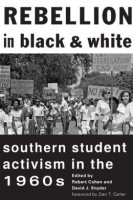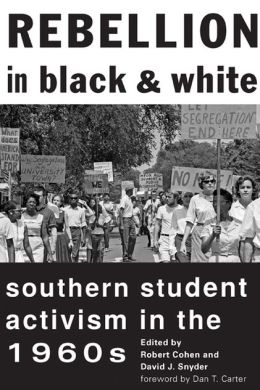 Editors: Robert Cohen and David J. Snyder. Foreword by Dan T. Carter
Editors: Robert Cohen and David J. Snyder. Foreword by Dan T. Carter
Publisher: Johns Hopkins University Press
Book Review by: Deekay Daulat
It was not just racial equality that African-Americans (usually referred to as Blacks or Negroes then) fought for in the 1960s and prior years, but also other causes such as academic freedom, desegregation, gender equality, free speech, police brutality, sexual liberation and various personal freedoms, the editors Robert Cohen and David J. Snyder point out in this eye-opening book.
Released last March, this collection of essays takes specific looks at student activist rallies in southeastern United States in and around that tumultuous decade, and presents the burning issues of that period of agitation and protest.
Even the Vietnam-era antiwar movement and world peace, not related to Black-White conflict in the United States, were goals espoused by student activist movements in the South. This is discussed in the essay by Gary S. Sprayberry entitled Student Radicalism and the Antiwar Movement at the University of Alabama, one of 16 contributions to this collection of commentaries on one of the most turbulent periods in U.S. history.
These articles raise new questions and provide provides fresh perspectives on the 1960s student activism, an important set of protests helped lead to the broader U.S. civil rights movement. Black Power was a recurrent cry at rallies on various campuses and public places in Alabama, Arkansas, Florida, Georgia, Louisiana, Mississippi, North and South Carolina, Oklahoma, Tennessee, Virginia, West Virginia and other states.
What is new and different in this book compared to others on student activism that changed the course of modern U.S. history? As Dan T. Carter notes in his Foreword:
“The writers in this collection tell us stories we haven’t heard before: of hippie coffeehouses and countercultural neighborhoods scattered around predominantly white southern colleges and universities, even demonstrations and riots by their students against police brutality, the repression of free speech, and in loco parentis restrictions by academic administrators. It seems so ‘un-white southern.’
“As one bemused University of Alabama professor wrote after he watched the violent demonstrations at his school in May 1970: ‘It’s like finding marijuana in your grandmother’s jewelry box.’…there was no marijuana in grandmother’s jewelry box when I transferred to the University of South Carolina in 1960. It was a parochial institution with fewer than six thousand students, all of them white and most of them from South Carolina.”
Carter concludes by recalling Gordon Wood’s suggestion that each generation must find its own way, and noting: “there is still something to be learned from those students of the sixties who struggled to liberate themselves and to create an America that demands something greater from us all.”
The essays are organized around four broad themes, each covered in Parts I to IV, namely:
- Part I – Early Days: From Talk to Action – contains essays on freedom, interracial dialogue, student free speech and the White struggle for racial equality.
- Part II – Campus Activism Takes Shape – presents events related to the antiwar movements, Black and White students’ protests, conservative student activism, and student radicalism.
- Part III – A Cultural Revolution and Its Discontents – brings out into the open discussions of issues relating to the counterculture as local culture, repression by the government, and sexual liberation.
- Part IV – Black Power and the Legacy of the Freedom Movement – provides an overview of efforts undertaken to organize students to achieve Black unity, a retrospect on Black Power, some historiographical reflections and an Afterword that points out that “Southern student activists marched through an unmapped political minefield as they sought social change.”
This is a must-read book for all: not only for those who lived through those years of violence that led to change, but also and especially for those who should take a closer look at that important period of American history through the eyes of the contributing writers.
A list of contributors and their bio-data indicates that they hail from various parts of academia that includes history professors, editors of journals, and administrators at colleges and universities.
Robert Cohen is a professor in the Department of Teaching and Learning at New York University.
David J. Snyder is an instructor in the Department of History at the University of South Carolina.







